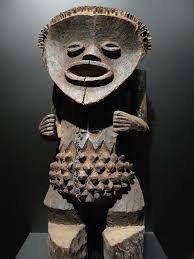
Exploring the Rich Tapestry of Tribal Art: A Unique Perspective.
Art, in all its forms, is a universal language that transcends cultural boundaries. Among the many diverse expressions of human creativity, tribal art stands out as a unique and captivating genre. It offers a glimpse into the cultural, spiritual, and artistic heritage of indigenous peoples from around the world. In this article, we will delve into the world of tribal art, examining its history, materials, and distinct differences from other well-known Western art forms.
The History of Tribal Art
Tribal art has a rich and ancient history, dating back thousands of years. Its origins can be traced to indigenous communities across Africa, Oceania, the Americas, and Asia. These communities created art as an integral part of their cultures, often for ritual, religious, or ceremonial purposes.
Tribal art encompasses a wide range of forms, including sculptures, masks, textiles, pottery, jewelry, and body adornments. Each piece tells a unique story, reflecting the customs, beliefs, and experiences of the people who crafted them.
Discovery and Appreciation
The discovery of tribal art by the Western world can be attributed to explorers, anthropologists, and collectors in the late 19th and early 20th centuries. As European powers expanded their colonial territories, they encountered indigenous cultures and began to collect tribal art objects. This marked the beginning of a growing fascination with these unique art forms.
One key aspect of appreciating tribal art is understanding the cultural context in which it was created. Many pieces hold profound spiritual significance and are deeply rooted in the traditions and ceremonies of their respective cultures. To appreciate the true value of tribal art, it’s essential to recognize the cultural stories and symbolism behind each piece.
Materials and Techniques
Tribal artists often use materials readily available in their environments. These materials can include wood, clay, stone, bone, shells, feathers, and natural pigments. The techniques employed by tribal artists are diverse and can include carving, weaving, painting, and beadwork.
What Sets Tribal Art Apart
Tribal art distinguishes itself from Western art in several ways:
- Cultural Significance: Tribal art is deeply intertwined with the culture and spirituality of indigenous communities. It often serves as a medium for storytelling, rituals, and the preservation of cultural heritage.
- Communal Creation: Unlike Western art, which often emphasizes individual artists, tribal art is frequently a communal effort. It involves multiple individuals working together to create pieces that reflect their collective identity.
- Abstract Symbolism: Tribal art often features abstract and symbolic representations rather than realistic depictions. These symbols convey deeper meanings and are often tied to myths, cosmology, and the spiritual world.
Appreciating the Value of Tribal Art
The value of tribal art extends beyond its aesthetic appeal. It serves as a bridge between the past and the present, offering insights into the history and beliefs of indigenous cultures. When evaluating the value of tribal art, consider these factors:
- Cultural Significance: Understanding the cultural context and symbolism of a piece enhances its value. Research the specific tribe or region associated with the art to gain insight into its meaning.
- Provenance: The history and documentation of an art piece’s ownership and origin can significantly impact its value. Provenance helps ensure authenticity.
- Condition: The state of preservation and any restoration work performed on the art piece can influence its value. Original, untouched pieces are often highly prized.
Masterpieces of Tribal Art
Several masterpieces of tribal art are celebrated for their cultural significance and artistic excellence:
The Fang Masks: These Gabonese masks are renowned for their striking, abstract features and are integral to the Bieri, a Fang ancestor cult.

The Haida Totem Poles: Created by the Haida people of the Pacific Northwest, these towering poles feature intricate carvings that depict stories, lineage, and spirituality.

The Benin Bronzes: These intricately cast bronze sculptures from the Kingdom of Benin (present-day Nigeria) depict historical and cultural narratives.

Recommended Reading
For those interested in delving deeper into the world of tribal art, here are some books to explore:
- “African Art” by Frank Willett
- “Oceanic Art” by Adrienne L. Kaeppler
- “The Tribal Arts of Africa” by Jean-Baptiste Bacquart
- “The Power of Display: A History of Exhibition Installations at the Museum of Modern Art” by Mary Anne Staniszewski (for insights into the Western appreciation of tribal art)
Tribal art is a testament to the diversity of human expression and cultural heritage. It offers a profound opportunity to connect with the traditions, beliefs, and artistic visions of indigenous peoples from across the globe. By understanding its history, cultural context, and symbolic language, we can appreciate the value of tribal art as a unique and invaluable part of our shared human heritage.


Leave a Reply